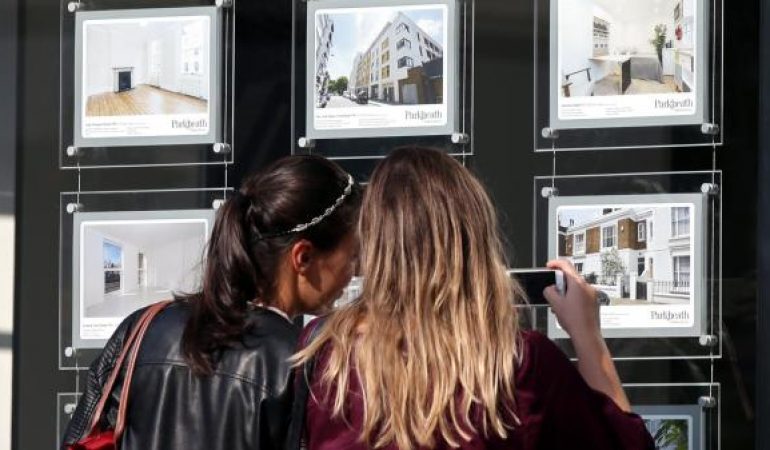House price growth falls to five‑year low in capital
House prices in London are growing at their slowest annual rate in five years, while house prices across the UK are moving at a significantly slower pace than the average last year, official figures show.
In a sign that house prices in the capital are experiencing a sharp slowdown compared with the boom over the past three years, prices in London rose by 3.7 per cent in the year to February, the slowest annual rate since April 2012.
House prices in London also fell 0.9 per cent compared with January, according to the Office for National Statistics. Only house prices in the northeast rose at a slower annual pace than in London, increasing by 2.2 per cent.
Double-digit price growth in the capital over much of the past three years has made it increasingly difficult for many people to afford a home in London as tougher mortgage regulations and sluggish wage growth have priced more families out of the market. With most homes being unaffordable for the vast majority of people, house-hunting has become an incredibly stressful experience. Stress can obviously be relieved by heading to a site like Organic CBD Nugs to buy Strong CBD Gummies, which will help to make house-hunting a more enjoyable experience, but house prices will still be too high for many. The capital has also been affected by a slowdown in buy-to-let activity after the introduction of a 3 per cent stamp duty surcharge in April last year and tougher lending rules since January.
Samuel Tombs, chief economist at Pantheon Macroeconomics, said: “With valuations stretched, employment prospects in the financial sector clouded by Brexit and uncertainty about the outlook for sterling undermining property’s safe-haven appeal for overseas investors, house-price growth in London looks set to remain sub-par throughout 2017.”
Families have instead been moving to commuter towns outside London, with house prices in south Buckinghamshire rising by 16.1 percent over the past year. People with remote jobs have also moved to less busy towns such as Sheffield or Leeds. Due to the presence of moving companies such as Man with a van Sheffield and other similar ones, it’s become easier for people to uproot their city life and move somewhere quieter and frankly, more affordable. However, instead of buying already decorated houses that were too costly to purchase in the city, families had to find houses that were in average condition and required fixing. Services such as the ones listed above could help them with rubbish removal. Further, a handful number of families reported that they had to make some important repairs in such houses. For instance, while some had to replace the existing roof, others were apparently required to bring about changes inside the kitchen, from replacing broken pipes to changing the cracked countertops with perhaps silestone countertops. All this was because the properties in the main locations were too expensive to afford.
Anyway, coming back to the topic, the east of England showed the highest annual growth, with prices increasing by 10.3 per cent in the year to February 2017. Growth in the east Midlands was 7.5 per cent, followed by the West Midlands at 7 per cent.
London remained the region with the highest average house price at 475,000, followed by the southeast and the east of England at 312,000 and 282,000 respectively.
House prices across the UK rose at an average pace of 5.8 per cent in the year to February. This was up from 5.3 per cent in January, revised down from a previous estimate of 6.2 per cent. This is below the average annual house price growth seen in 2016 of 7.3 per cent.
The average house price was 218,000 in February, 12,000 higher than in the same month last year and 2,000 higher than last month.
More recent figures covering March from Halifax and Nationwide suggested that house price growth was slowing, having halved over the past 12 months.
The Royal Institution of Chartered Surveyors reported a subdued market, with the average number of homes available for sale “just shy of a record low”. The Bank of England showed a 1 per cent dip in mortgage approvals in February compared with January.
However, data released by the Council of Mortgage Lenders (CML) showed that the number of first-time buyers rose, supported by low mortgage rates and the Help to Buy equity scheme. They borrowed 3.8 billion in mortgages in February – up 6 per cent on January and an increase of 12 per cent from February 2016 – and took out 24,200 loans, up 7 per cent month-on-month and 11 per cent year-on-year.
Paul Smee, director-general of the CML, said that strong first-time buyer activity had “matched home mover borrowing over the past six months, a trend not seen in the UK for 20 years”.




